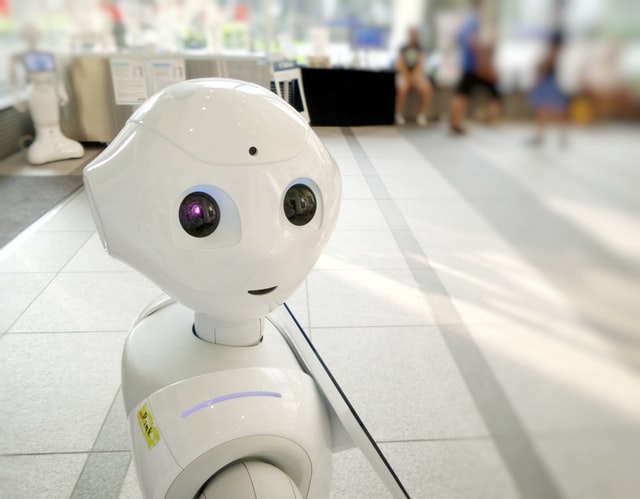
Machine Translation: A comprehesive guide
Machine Translation has long been the bane of many translators' existences. The rise of Machine Translation can be traced to two phenomena, globalization, and the internet. Of course, for a machine like google translate to translate a document, it must understand not only the source and target language but also concepts, rules, and idioms relating to both languages. Any program that aims at tremendous coverage of translated text that is human-readable is a huge undertaking because no matter how much you increase the size of your data set, it remains finite and insufficient for modeling all of linguistics.
Machine translation will continue to improve its translation process as more sources are added to narrow down syntagmatic and paradigmatic ambiguity in source documents. A lot of researchers have tried various approaches to improve machine translation technology language models such as better dictionary construction, translation memory systems, multi-source models with varying translation probabilities, and others. With text data today becoming richer than ever before, future advancements in this field may emerge from these probabilistic models.

What is machine translation?
Machine translation is a sub-field of computational linguistics that investigates the use of software to translate text or speech from one language to another. Some MT systems are able to translate broad categories of text, such as news stories and technical documents, and produce reasonable quality translations. Other systems have been developed to translate more specialized content (e.g., legal contracts, medical records), which require a much higher degree of accuracy.
Machine translation can be seen as an instance of automatic text processing. In recent years, there has been a rapid growth in MT systems that can produce human-quality output in certain limited domains (such as weather reports). The widespread availability of machine-translated texts has also led to increased research into the detection of machine translation errors and the development of techniques for correcting those errors.
The theoretical aspects of machine translation form the core of the field known as natural language processing (NLP), which includes finite-state transducers and related automata theory, formal language theory, pattern recognition and classification theory, parsers and grammars for natural languages, computational complexity theory and algorithms for NLP tasks, computational linguistics including morphology and syntax analysis, probabilistic methods for NLP tasks including speech recognition and machine learning methods.
How does machine translation work?
1. Analyzes the text to be translated and finds the correct format for it to be translated.
2. It will then find out the meaning of each word in order for it to come up with the best translation for it.
3. Next, it translates a sentence at a time or phrase by phrase until it comes up with a complete translation of the entire text.
4. Lastly, it will spell check and proofread the entire translated work and make sure that there are no errors in grammar or spelling through a post-editing process where the translator will have to edit accordingly before submitting it to their clients.
That's the overall process, however, when we are talking about the type of method to reach such a result there are two main processes.
They include rule-based translation, statistical-based translation and the latest neural-based translation.
Machine translation data
As a human language translator, you will have access to lots of resources to help you translate from one language to another. These include glossaries, style guides, and reference materials. Machine translators need these too, but on a much larger scale. This is because machines learn by crunching numbers, so the more data we give them to work with the better they get at making translations. Therefore, as well as reference materials, machine translators need a lot of bilingual texts so that they can spot patterns between languages and use them for future translations. The more data they have, the more accurate the results are likely to be.
Neural machine translation
Neural machine translation is a new approach that uses the computational power of artificial intelligence to deliver quick and accurate results across many languages and language pairs. It works by processing text through a large artificial neural network that has been trained on massive amounts of existing human translations made by professional translators.

What are the benefits of machine translation?
Increased accessibility
There are many people out there who do not speak English but would like to access information posted on the internet in English. These people would also like to read documents (such as contracts) that are written in English. Machine translation can help them get this information by providing an instant translation.
Cost savings
Using a machine translator can be much cheaper than hiring a human translator. Translation tools can save time and money for companies that regularly produce documents in multiple languages. This can be particularly useful for companies that have many foreign customers and clients.
Time savings
Machine translation lets you translate documents instantly. Documents translated by humans can take months to translate and cost your company thousands of dollars.
Consistency
One of the most significant advantages of machine translation for businesses is the consistency it can provide. Because machines are not subject to human errors, the translated content will have the same consistency as the original content.
Scalable
Machine translation scales very well, and you can translate as much content as you like without needing to hire more translators or set up a new project management system. If you’re translating your website into 50 languages, you’ll need to pay 50 translators or hire an agency that has a workforce of 50 translators. But with MT there are no limits to how much content you can translate, or into how many languages.
If you want your hands on the most advanced Machine Translation software that there is out there,you can check our Friends at Memesource.

When should you use machine translation?
Machine translation isn't a one-size-fits-all solution. It's important to understand the best use cases for machine translation to get the most out of it as a tool.
Machine translation works best when you have high volumes of content that don't require absolute accuracy, such as:
Small pieces of text such as tweets, headlines, product specifications or FAQs.
Automated customer support queries and responses.
Large volumes of internal business communications such as emails, reports and announcements.
An ongoing stream of web content for which you need quick turnaround times.
So why isn’t everyone using Machine translation?
Despite the tantalizing promise of automatic translation, there are some very real barriers to its broader adoption. One issue is that many people still don’t know about it, or haven’t had a chance to try it.
Another is that there are still gaps in the technology — for instance, it often fails to recognize idioms and puns, and can also be inaccurate when it comes to translating highly specialized texts like legal or technical documents or a difficult language pair. Finally, there is a lack of confidence among users that the final translation from a machine is correct or even makes sense.
Conclusion
Machine translation is useful, despite its flaws. It’s a great way to get a rough idea of what a text is saying, but you really shouldn’t use it as your primary source of information. Before using this tool, be sure to consult professional human translators. They’ll produce more accurate results, and will do it faster than computer programs can. However, if you’re strapped for time and money, machine translations should be just fine for the occasional email or research paper, but whenever you have the chance, use human and machine translation hand in hand in order not to sacrifice the translation quality.







